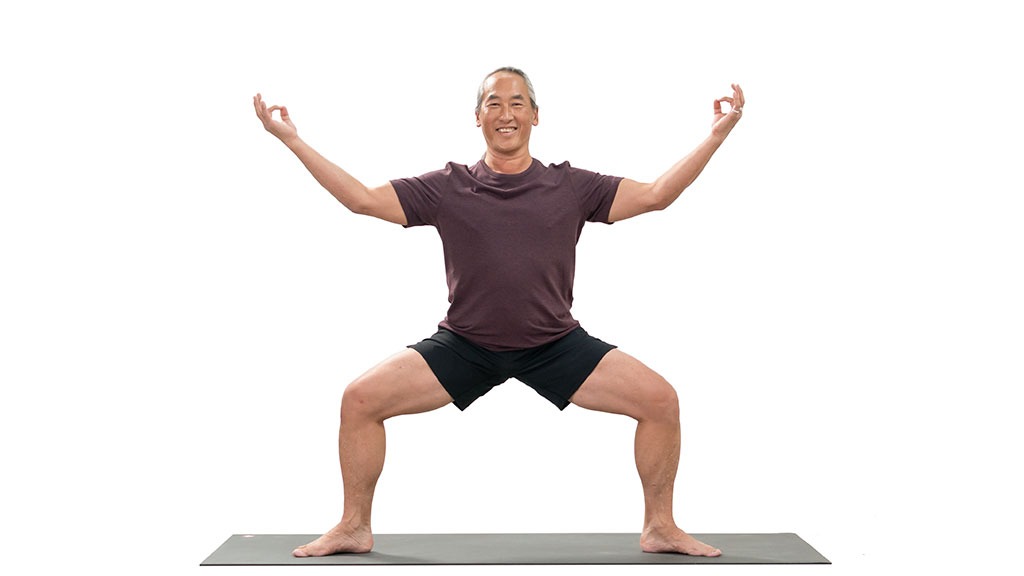Temple Pose (Samasthiti or Tadasana): A Complete Guide

Strong 8k brings an ultra-HD IPTV experience to your living room and your pocket.
Temple Pose, often referred to as Samasthiti or Tadasana, is a fundamental standing posture in yoga. It may appear simple, but its benefits are profound, and its proper execution is crucial for developing a strong foundation in yoga practice. The name "Temple Pose" is often associated with an expression of reverence and balance, symbolizing the steadiness and strength of a temple structure. In this article, we will explore the significance, benefits, alignment, and variations of Temple Pose.
What is Temple Pose?
Temple Pose referred as Samasthiti or Tadasana, is a standing posture where the body is aligned in a neutral position, grounded firmly through the feet, and the body is evenly balanced. It is a foundational pose that encourages correct posture, breath awareness, and stability. Often used as the starting or ending pose in yoga sequences, Tadasana is essential in cultivating a connection to the earth, mindfulness, and awareness of the body’s alignment.
How to Practice Temple Pose
Start in a Standing Position: Begin by standing with your feet hip-width apart. Ensure your weight is evenly distributed across both feet, grounding through the heels and the balls of the feet.
Activate Your Legs:
Engage your quadriceps (thigh muscles) to lift your kneecaps, and make sure your legs are straight, but not locked. Firm your thighs and gently draw them inward to activate your inner thighs.
Align Your Spine:
Lengthen your spine by lifting through the crown of your head. Keep your pelvis in a neutral position, avoiding excessive tilting of the hips. Gently engage your core muscles for support.
Place Your Arms:
Extend your arms alongside your body with palms facing inward or outward. Alternatively, you can bring your palms together in front of your chest in a prayer position if you prefer.
Relax Your Shoulders:
Release tension in your shoulders by gently rolling them back and down. Keep your chest open and your collarbones wide.
Engage Your Core:
Draw your navel toward your spine to activate your abdominal muscles. This will help stabilize your posture and improve balance.
Focus on Your Breath:
Inhale deeply through your nose, and exhale slowly, maintaining steady, smooth breathing. Try to keep your breath calm and steady throughout the pose.
Mindful Presence:
Hold the pose for several breaths, cultivating mindfulness and awareness of the alignment of your body and the sensations you are experiencing.
Key Benefits of Temple Pose
Improved Posture: Temple Pose helps improve overall posture by encouraging the natural alignment of the spine, shoulders, and hips. It strengthens the back and abdominal muscles, promoting better alignment in all standing postures.
Increased Awareness:
This pose requires heightened awareness of the body’s alignment, making it an excellent practice for cultivating mindfulness and focus. It encourages self-awareness, which is beneficial in both yoga practice and daily life.
Enhanced Balance and Stability:
By grounding the feet and engaging the core muscles, Tadasana helps to develop a sense of balance and stability. It improves the coordination of body parts, making it easier to transition into other postures.
Strengthens Legs and Core:
Holding Temple Pose activates and strengthens the legs, particularly the quadriceps and calves. The engagement of the core muscles also supports a strong, stable foundation.
Energy Flow and Relaxation:
The practice of standing tall and breathing deeply in Temple Pose helps promote energy flow throughout the body. The pose can be calming and centering, helping to reduce stress and tension.
Prepares for Other Poses:
Temple Pose is often used as a preparatory posture for more complex standing poses. It encourages proper alignment, balance, and focus, which are essential when transitioning into more dynamic movements.
Common Mistakes to Avoid
Misaligned Feet:
Ensure that your feet are not too wide or too narrow. Keeping them hip-width apart will help maintain balance and stability.
Slouching:
Avoid rounding the shoulders or arching your lower back. Keep your spine long, and engage your core to maintain a straight and tall posture.
Locking the Knees:
Keep a slight bend in your knees rather than locking them. Locking the knees can cause strain on the joints and hinder your balance.
Conclusion
Temple Pose, or Tadasana, is an incredibly versatile and essential pose in yoga practice. Although it may seem simple, its ability to cultivate strength, stability, and mindfulness makes it a valuable tool for practitioners of all levels. Whether you are new to yoga or a seasoned practitioner, dedicating time to perfecting the alignment and awareness in Temple Pose will enhance your overall practice and provide a solid foundation for more complex postures.
Note: IndiBlogHub features both user-submitted and editorial content. We do not verify third-party contributions. Read our Disclaimer and Privacy Policyfor details.


